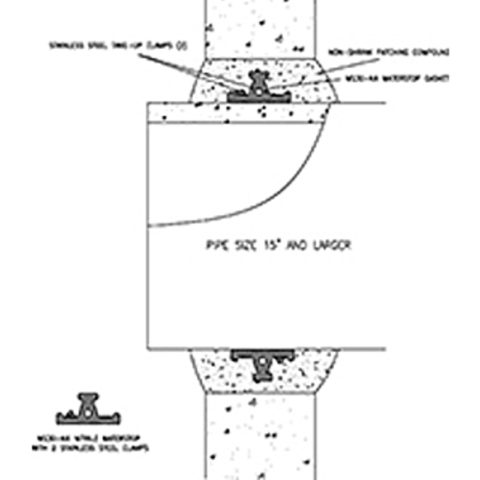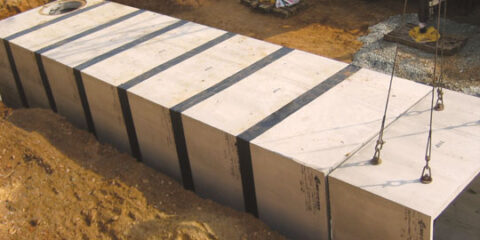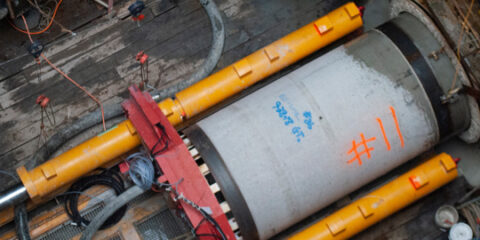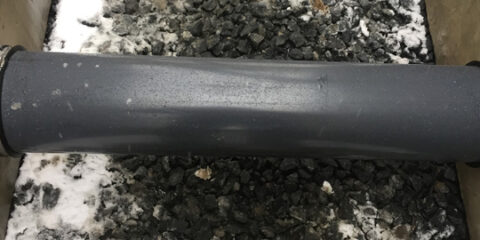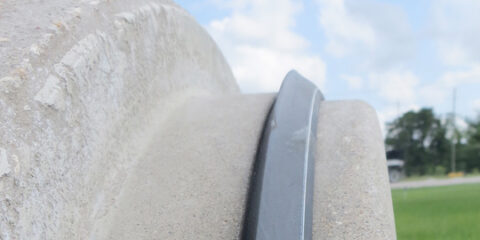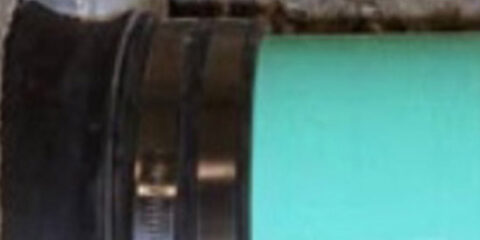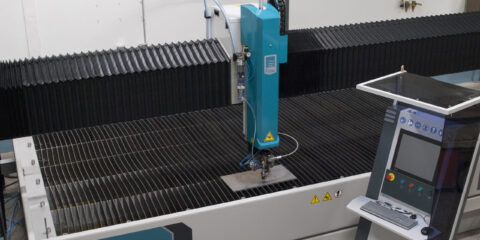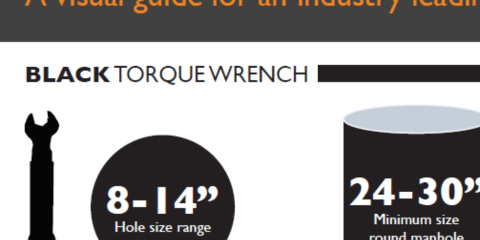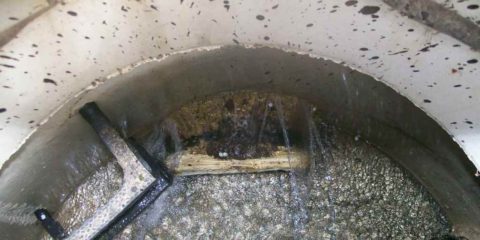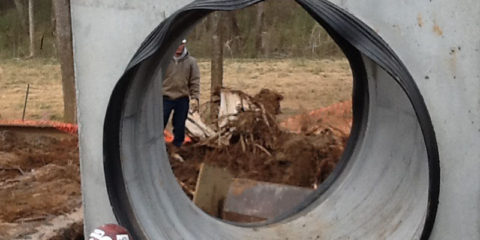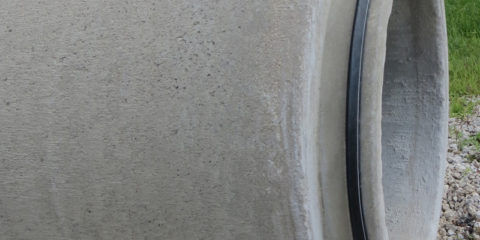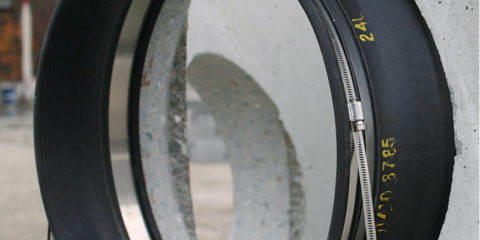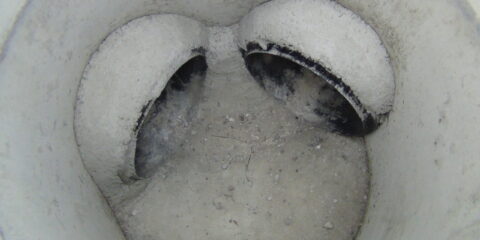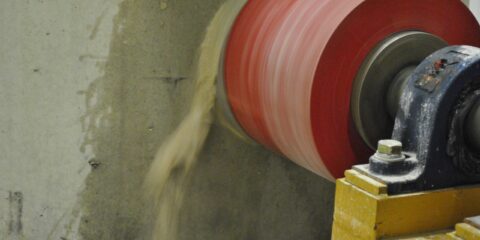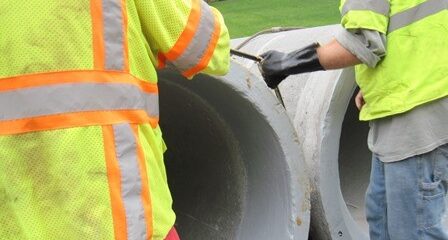
Nitrile Waterstop
Nitrile Waterstop stops soil and water infiltration through pipe-to-structure penetrations when a flexible connector conforming to ASTM C 923 cannot be used. A Nitrile Waterstop is used when there is concern about the connector coming into contact with petroleum based compounds or solvent based compounds.
What It Is
Nitrile Waterstop stops soil and water infiltration through pipe-to-structure penetrations when a flexible connector conforming to ASTM C 923 cannot be used. A Nitrile Waterstop is used when there is concern about the connector coming into contact with petroleum based compounds or solvent based compounds.
Literature
Full Literature
How It Works
- Stainless steel clamps secure the connector to the pipe.
- The connector is placed to follow the arc of the manhole wall and the stainless steel clamp is placed straight across the confinement area.
- The pipe is placed in position and grouted in place using non-shrink patching compound OR
- The pipe is placed in position in the formwork and the structure is poured around it.
- After the mortar or concrete has set, the structure can be backfilled.
Why It's Better
- Nitrile rubber resists most chemicals and hydrocarbons found in effluent and soils.
- The best alternative to solely using mortar joint compound.
- Helps to control exfiltration or infiltration between the connector and the pipe
Meets or Exceeds
NITRILE WATERSTOP meets or exceeds the Physical Property requirements of the following Specifications:
- ASTM C 923 – Standard Specification for Resilient Connectors Between Reinforced Concrete Manhole Structures, Pipes, and Laterals
- ASTM C 443 (Oil Resistance)
- ASTM C 1619 CLASS D
- ASTM C 1478 – Standard Specification for Storm Drain Resilient Connectors Between Reinforced Concrete Storm Sewer Structures, Pipes, and Laterals
- ASTM F 2510 Standard Specification for Resilient Connectors Between Reinforced Concrete Manhole Structures and Corrugated High Density Polyethylene Drainage Pipes
Where To Use
- Manholes
- Wet wells
- Square pump and lift stations
- Storm water structures
- On-site treatment structures
- Junction chambers
- Grease interceptors
- Round, arch and elliptical pipes
Please Note
Can be used with corrugated HDPE and plastic pipes with a PVC and manhole sleeve adapter. Contact us for more details.
- A nitrile Waterstop grout ring shall be employed in the connection of storm water pipes and other nonwatertight applications to precast concrete or poured-in-place structures to control infiltration and exfiltration and to meet the requirements of ASTM D 2321 Standard Practice for Underground Installation of Thermoplastic Pipe for Sewers and Other Gravity-Flow Applications, Section 7.10-Manhole Connections.
- The nitrile Waterstop connector shall consist of a rubber gasket and an external take up clamp to secure the Waterstop to the pipe before grouting or pouring in place. The rubber Waterstop shall be constructed solely of synthetic or natural rubber and shall meet and or exceed the physical property requirements of ASTM C923, ASTM C 1478, and ASTM F 2510.
- Minimum thickness of the cross section shall be 0.30-inches (7.6mm) and a minimum of 3-inches (76.2mm) in length. The key lock portion shall extend into the concrete a minimum of 1.5-inches (38mm) to provide an adequate anchorage for mortar. Non-shrink grout shall be placed around the entire Waterstop and maintain a minimum thickness of 2-inches (50mm) between the rubber gasket and any existing or hardened concrete to permit proper consolidation around the Waterstop connection.
- The external take-up clamp shall be constructed of Series 300 non-magnetic stainless steel and shall utilize no welds in its construction.
- Selection of the proper size Waterstop and any in field testing requirements shall be in strict conformance with the recommendations of the Waterstop manufacturer. The Waterstop Grout Ring shall be WS-30 Series Waterstop as manufactured by Press-Seal Corporation of Fort Wayne, Indiana or approved equal.
